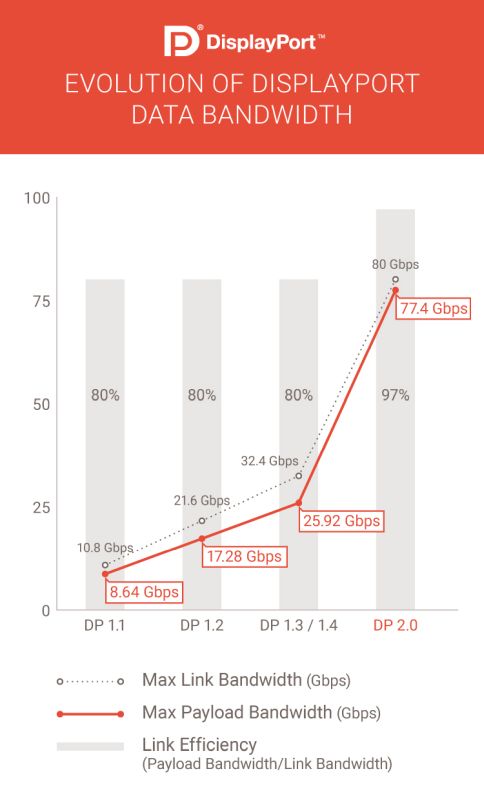In terms of performance, DisplayPort 2.0 is capable of channelling three times more bandwidth at 80Gbps max. Versus the previous generation DisplayPort 1.4a. That means that the new standard can support display resolutions of 8K or greater. Not only that, DisplayPort 2.0 will also support 8K resolutions at higher refresh rates of 120Hz. Oh, and that’s with HDR. The higher resolutions that DisplayPort 2.0 supports also reaches up to 10K (10240 x 4320) and 16K (15360 x 8460), but with their refresh rates limited to 60Hz. Additionally, DisplayPort 2.0 will able to up to 8K display or three 10K displays at simultaneously.
The list of display resolutions supported as listed below: Single display resolutions: 16K (15360×8460) display @60Hz 10K (10240×4320) display @60Hz Dual display resolutions: 2x 8K (7680×4320) displays @120Hz 2x 4K (3840×2160) displays @144Hz Triple display resolutions: 3x 10K (10240×4320) displays @60Hz 3x 4K (3840×2160) displays @90Hz VESA’s new DisplayPort 2.0 will be delivered via the DisplayPort connector, USB-C, as well as through Intel’s Thunderbolt 3 technology. Albeit having some of the same cabling issues that the latter medium of delivery has encountered. As far as availability goes, VESA expects the new DisplayPort 2.0 standard sometime nearing the end of 2020. (Source: VESA, AnandTech, The Verge)
